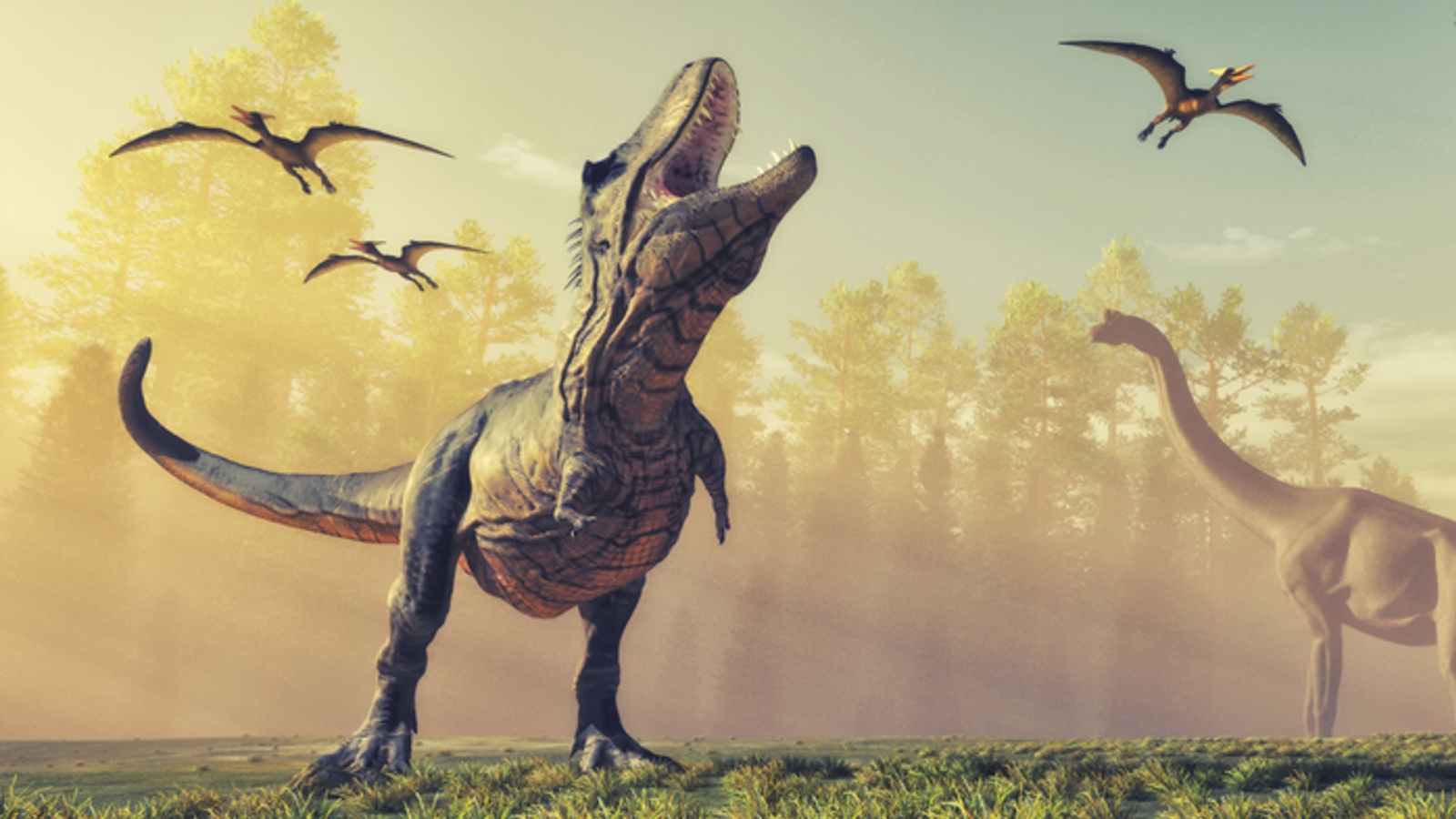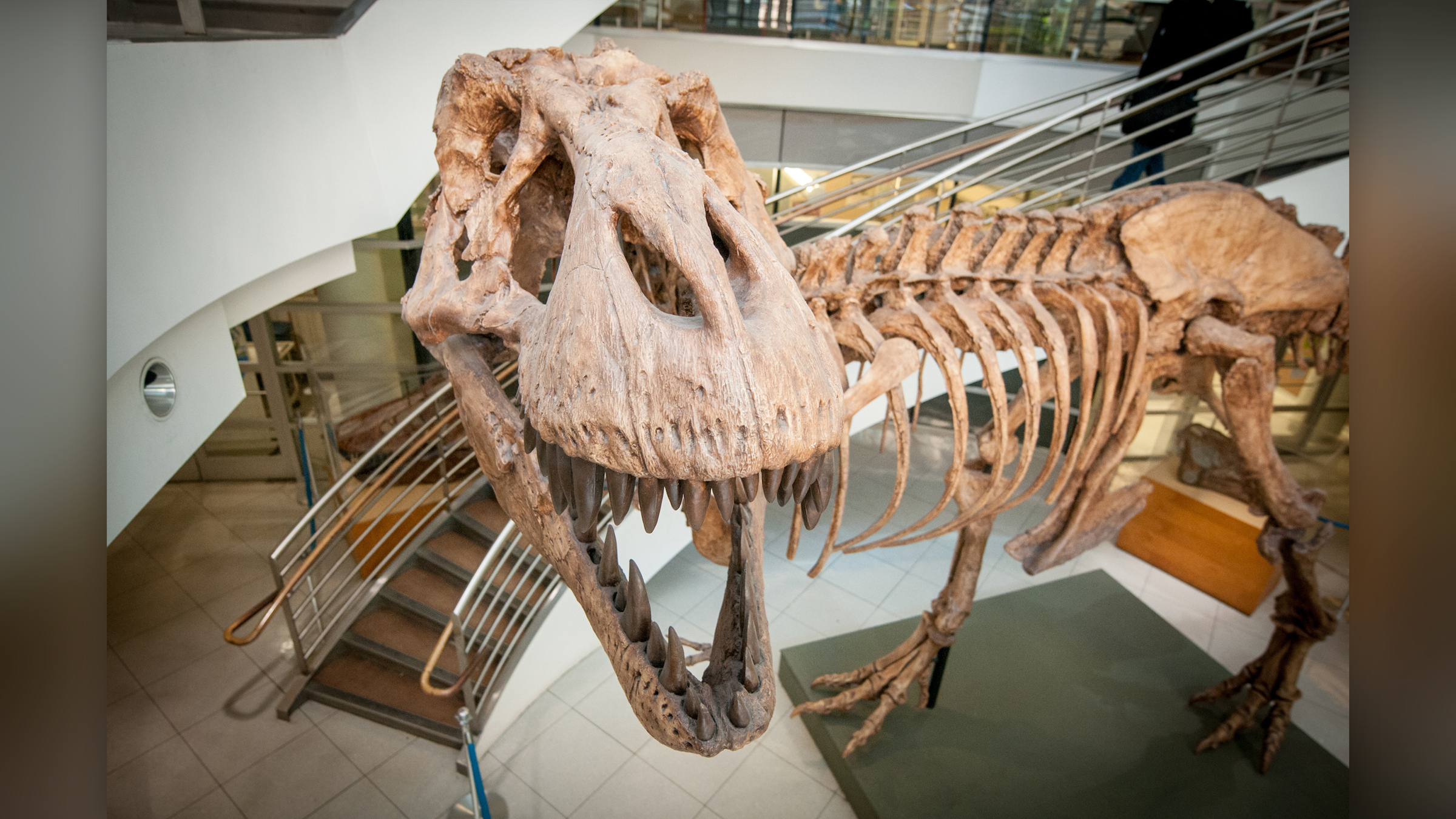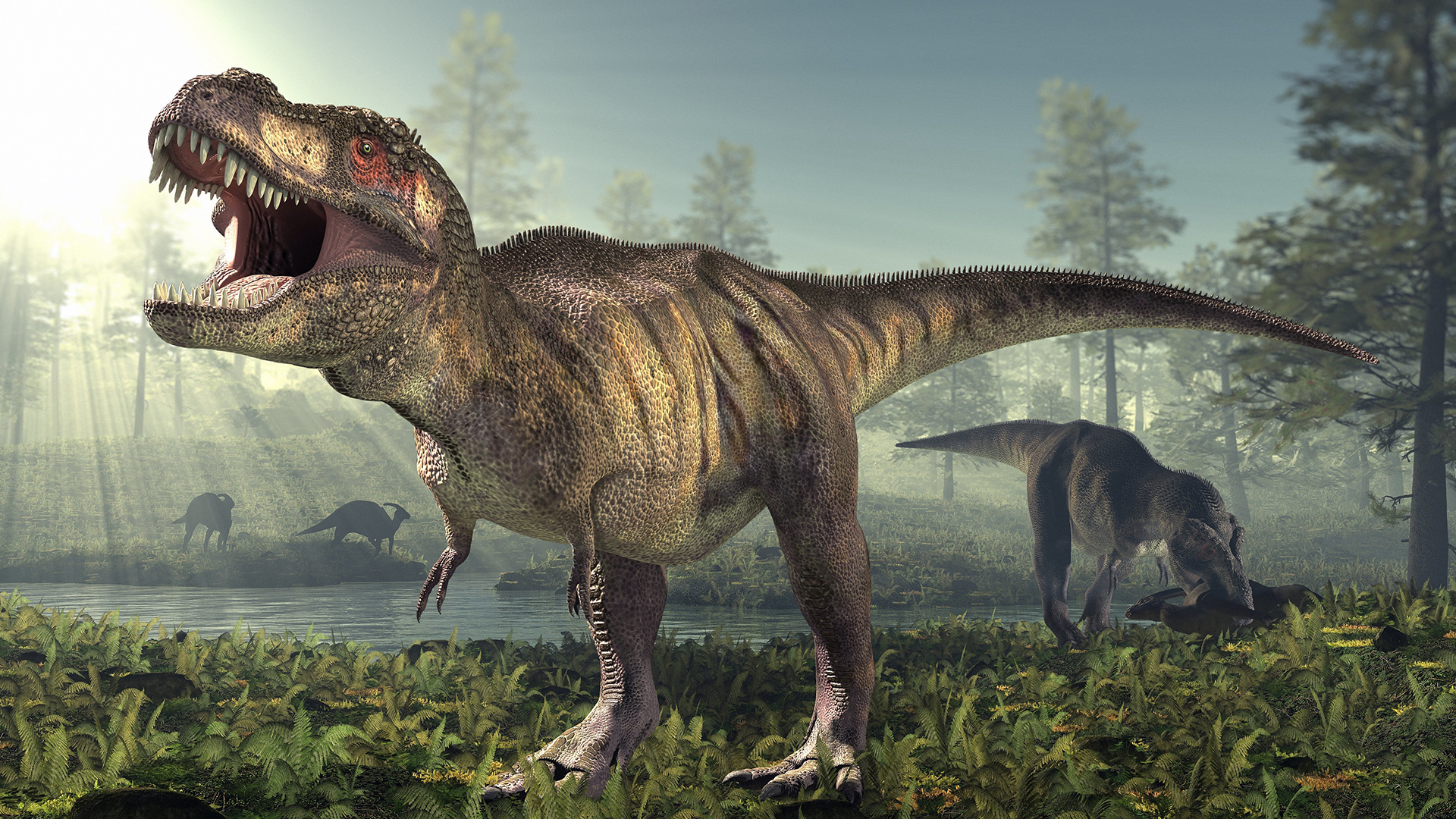1.7 billion Tyrannosaurus rexes walked the Earth before going extinct, new study estimates
The new prediction suggests fewer T. rex individuals roamed our planet than scientists previously thought.

The total number of Tyrannosaurus rex to ever roam Earth has been recalculated by scientists, with new research revealing 1.7 billion of these dinosaur kings existed throughout our planet's history.
In April 2021, a study published in the journal Science estimated that up to 2.5 billion T. rex individuals lived between 68 and 65.5 million years ago. But a new study, published April 18 this year in the journal Palaeontology, has challenged that number, suggesting the actual figure is probably closer to 1.7 billion.
Study author Eva Griebeler, an evolutionary ecologist at the Johannes Gutenberg University of Mainz in Germany, told Live Science that her new model factored in information about T. rex that the original study's authors overlooked, which resulted in the reduced number.
The result is a more well-rounded study that improves upon the original team's work, Charles Marshall, a paleontologist at the University of California, Berkeley and lead author of the 2021 study, told Live Science.
Related: 'Frightful' never-before-seen tyrannosaur might be the 'missing link' in T. rex evolution

In the original study, Marshall's team created a complex model that factored in a number of different variables — such as average body mass, population density, approximate geographic range, age of sexual maturity, number of eggs laid, average lifespan, survival rates and generation time — to estimate how many T. rex could have survived alongside one another. The model revealed that each T. rex generation likely consisted of around 20,000 individuals and that there were around 125,000 generations in the 2.5 million years they existed — meaning 2.5 billion T. rexes in total.
But Griebeler disagreed with some of the data imputed into this model. She believed Marshall's team overestimated the survival rates and egg-laying capabilities of T. rex, as well as the number of generations that existed during this time, which skewed the results.
Sign up for the Live Science daily newsletter now
Get the world’s most fascinating discoveries delivered straight to your inbox.
Research by Griebeler published shortly after the original study found these values were likely more similar to those seen in modern birds and reptiles. When these values were imputed into an updated model, it revealed that there were 19,000 individuals in each T. rex generation and that there were only around 90,000 generations, meaning the maximum number of T. rex to exist was 1.7 billion.

The original study was the first to estimate how many T. rex lived on Earth and "was driven in part by pure curiosity," Marshall said. It was like wondering "how many stars there are in the sky," he added. As a result, the team was happy to have come up with a decent estimate at all. But the researchers are glad that it has now been updated to a "more realistic" estimate, Marshall said.
Regardless of the exact number, both studies raise an interesting question — where are all the T. rex bones? If Griebeler's predictions are correct, it means that we have only found the remains of 0.0000002% of these giant dinosaurs. This is an important question that requires further research, Griebeler and Marshall said.
Our understanding of T. rex is constantly changing. In recent years, numerous discoveries about the species have altered what we know about the long-dead dino kings.
In November 2022, one research group predicted that the largest T. rex to ever walk Earth would have been 70% larger than the largest known T. rex fossil "Scotty." And in April 2021, another group revealed that the species’ maximum speed would have likely been around 3 mph (5km/h), which is around the same speed as a walking human. And other discoveries have suggested that the giant dinosaurs were also warmboolded like modern birds and hid their teeth behind a thin pair of lips.

Harry is a U.K.-based senior staff writer at Live Science. He studied marine biology at the University of Exeter before training to become a journalist. He covers a wide range of topics including space exploration, planetary science, space weather, climate change, animal behavior and paleontology. His recent work on the solar maximum won "best space submission" at the 2024 Aerospace Media Awards and was shortlisted in the "top scoop" category at the NCTJ Awards for Excellence in 2023. He also writes Live Science's weekly Earth from space series.










